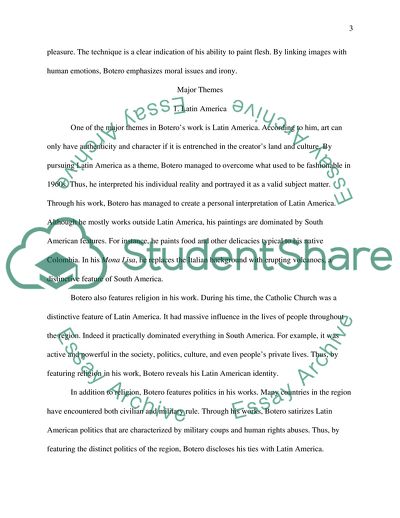Cite this document
(The Artwork of Fernando Botero Essay Example | Topics and Well Written Essays - 1750 words, n.d.)
The Artwork of Fernando Botero Essay Example | Topics and Well Written Essays - 1750 words. https://studentshare.org/visual-arts-film-studies/1845546-fernando-botero-colombian-artist
The Artwork of Fernando Botero Essay Example | Topics and Well Written Essays - 1750 words. https://studentshare.org/visual-arts-film-studies/1845546-fernando-botero-colombian-artist
(The Artwork of Fernando Botero Essay Example | Topics and Well Written Essays - 1750 Words)
The Artwork of Fernando Botero Essay Example | Topics and Well Written Essays - 1750 Words. https://studentshare.org/visual-arts-film-studies/1845546-fernando-botero-colombian-artist.
The Artwork of Fernando Botero Essay Example | Topics and Well Written Essays - 1750 Words. https://studentshare.org/visual-arts-film-studies/1845546-fernando-botero-colombian-artist.
“The Artwork of Fernando Botero Essay Example | Topics and Well Written Essays - 1750 Words”. https://studentshare.org/visual-arts-film-studies/1845546-fernando-botero-colombian-artist.


